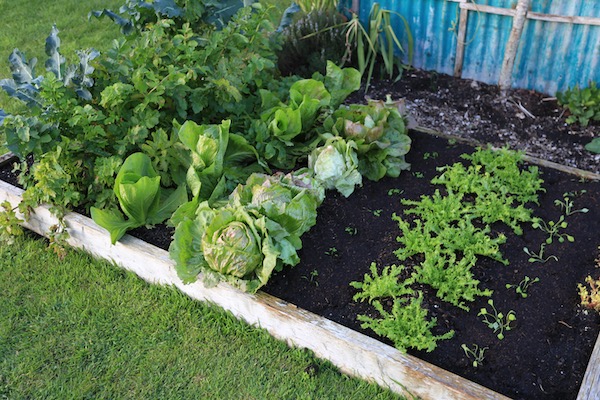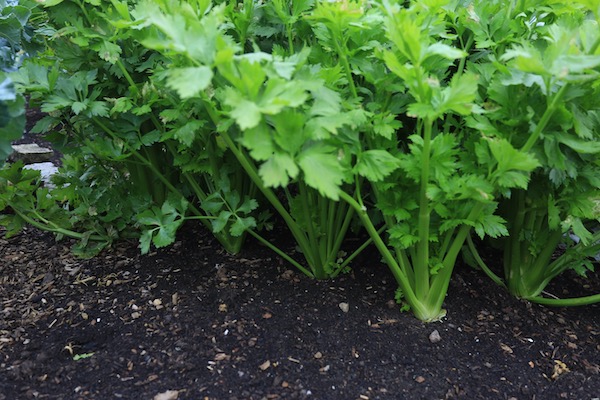The transition from summer to winter vegetables is almost complete. It’s both sad and exciting: we just ate the first celeriac, yet still have tomatoes ripening in boxes. There have been cool nights with ground frost, not cold enough to kill the gorgeous marigolds and zinnias.
However my Czar runner beans have not dried as well as normal, after the 111mm/4.4in rain over five days in early October. Day temperatures are consistently 11-14C, mid fifties F.



Compost making
There is so much interest now in making compost, and if you are one of many who are perhaps struggling with a first heap, please don’t be discouraged! It’s not always easy, especially when supplies of raw material are limited. For example, heaps don’t get hot when additions are small and sporadic – but the resulting compost can still be good, eventually.
The photos I show from here can discourage some, and I apologise for that. Homeacres is a 3/4 acre garden (one quarter acre of vegetables), so there is a lot of raw material. Plus I add wood chip contributions from tree surgeons/arborists, and from other sources such as cardboard, paper, coffee grounds, hair (!) and spent hops.



Clearing an allotment no dig
With cardboard and compost of almost any kind, you can clear weeds quickly, then plant. See these results on the Wheaton’s allotment in Norfolk, which they took on in early summer.



Mixed results
I am upset to hear of a lovely allotment site in Oxford, being threatened by bulldozing to make new houses. With new planning laws, this will be harder to prevent, although there is a petition you can sign.
If you have space at home, my other two photos below give ideas for maximising harvests from small spaces. See this video for a year of cropping the one bed in my middle photo below.



Small garden
Harvests continue to be steady and seasonal, with beetroot, leeks, salads, herbs and the first swedes ready. We made a video about it, posting on You Tube very soon.
You will see a sweet potato harvest. I was amazed by the 1.82kg/4lb of white fleshed Erato Gusto, with a fine flavour. There are two plants still to harvest.


Seasonal vegetables
There is so much to harvest! Succession sowing and planting in summer pays off through autumn and winter.
We sell a lot to Bruton. Homeacres beds are still 90% full of vegetables, gradually emptying with each passing week now. Then we clear and spread the annual inch/2.5cm of compost.



Winter and spring harvests
Vegetables to harvest fresh in the winter half of each year start life at different times. For best harvests, timing makes a big difference.
Sow Brussels sprouts in May, broccoli June, cauliflowers July, Chinese cabbage 1st August, pak choi early to mid August, spring cabbage late August. These are all brassicas.



Autumn winter spring
Lettuce, spring cabbage and salad onions to over winter can be sown late August. Plants do not have time to grow too large before winter, and they sit quiet for a while in midwinter. Thanks to a strong root system, new growth is fast and welcome in early spring.
Sow garlic now, and broad/fava beans late October to early November. The idea is to have not too much leaf growth before winter. especially for broad beans, which otherwise suffer damage from wind and frost.



Insects on brassicas, even in winter
Sow Chinese cabbage and salad rocket in early August. After transplanting these, I cover with mesh against insect. Even then some insects get in, especially to pak choi and Chinese cabbage. THE most difficult vegetables!



Fungal world
Autumn rains see many mushrooms and toadstools, a sign of healthy soil. There is a fine range at Homeacres, and in places the soil is quite white with mycelia. Be happy if you see this in your soil.


Celery and septoria, another fungus
Also in the damp of autumn, we see a lot of Septoria blight on celery, celeriac and parsley. I am not aware of a remedy except for harvesting before it’s too endemic in plants.
With celery for example, some brown spots on leaves does not matter. However within say two weeks of seeing them, it can infect the celery stems as well and discolour them.
By December, it can cause rotting of celeriac, if they are left outside. A November harvest is best for celeriac, and they store well in a shed.


Under cover growing in autumn
It’s the changeover time, with final picks of summer’s plantings. I am sad to see my old friends go, not least the marigolds.



I use the greenhouse’s extra warmth for aubergines and even some ripe peppers.



Under cover growing in winter
September sow, October transplant. Here it helps to have plants in the ground before mid October, giving them more time to settle and grow new roots before winter.
On 7th September I sowed lettuce Grenoble Red and endive, plus land cress. Then on 17th-18th we sowed all other winter salads, including salad rocket, mustards, and Claytonia.
We water fully before planting, then need to water less afterwards, say twice a week now and once a week November, even less in winter.



Bought seed, and seed saving
My experiences recently are not good, with many older and open pollinated varieties of vegetables. For example
- Gardeners Delight tomato, which is now twice the size, half as sweet and tough to bite.
- Late sprouting purple broccoli has smaller stalks, so I grow Claret F1.
Most importantly, Boltardy beetroot is slipping away from its earlier high standard. Seed producers are not selecting best beetroots to save seed from. See the result below. I complained to Kings Seeds and got nowhere!
The other options are F1 seed, or save your own. Both are expensive – beets need 8-10 plants together for cross pollination, so that is a lot of space. Plus you need good roots to select from, for planting next spring. The selection/roguing of poor plants is what seed companies are not paying for.
See more on Seed Saving in my online Course 2.



Courses
It is an experience to run courses in Covid days. For some we have been outside too much and gotten cold. So we come in more if needed, masked up and I wear a visor while talking inside.
It’s great to meet people in real life!!
There are two courses here this coming week, fully booked, then two in Inverness!













































0 comments